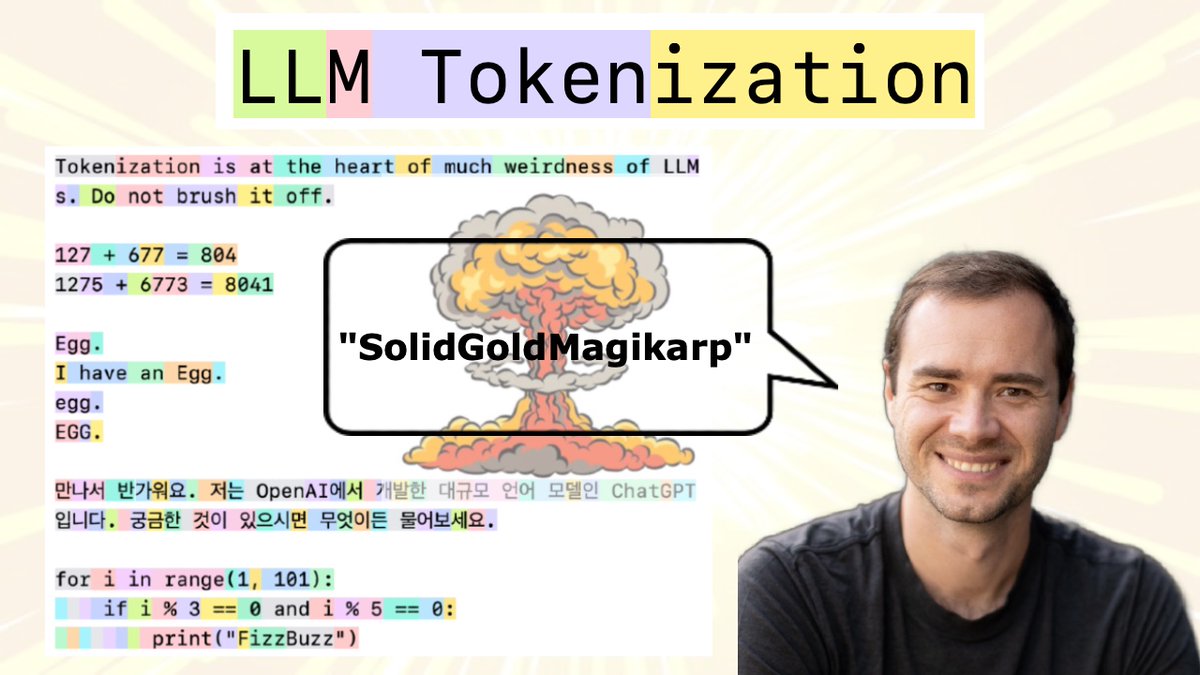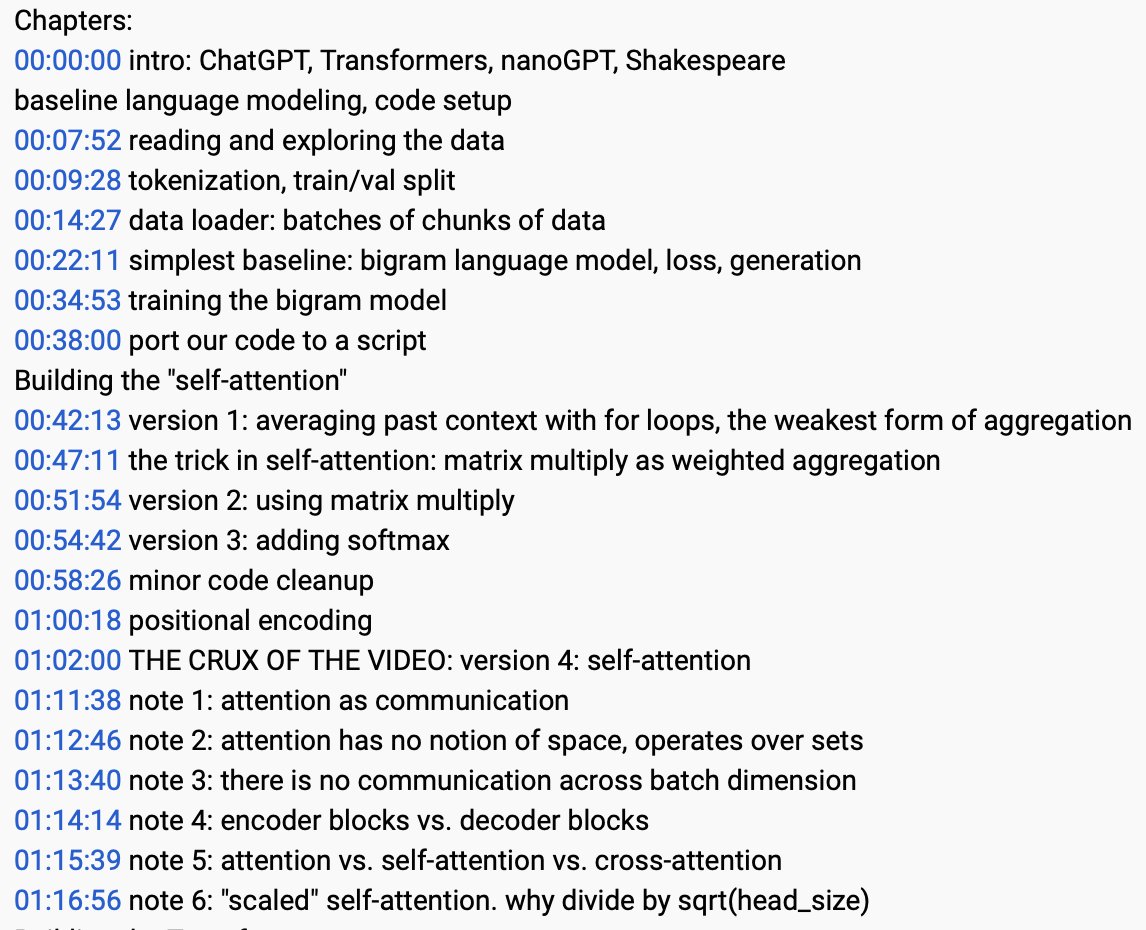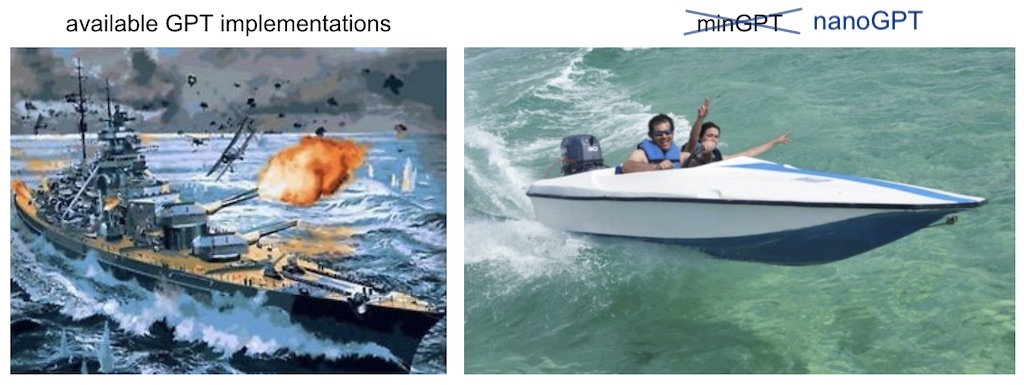
Building @EurekaLabsAI. Previously Director of AI @ Tesla, founding team @ OpenAI, CS231n/PhD @ Stanford. I like to train large deep neural nets.
66 subscribers
How to get URL link on X (Twitter) App





 "Links in the reply followup" (not a huge fan :p)
"Links in the reply followup" (not a huge fan :p)
 We will see that a lot of weird behaviors and problems of LLMs actually trace back to tokenization. We'll go through a number of these issues, discuss why tokenization is at fault, and why someone out there ideally finds a way to delete this stage entirely.
We will see that a lot of weird behaviors and problems of LLMs actually trace back to tokenization. We'll go through a number of these issues, discuss why tokenization is at fault, and why someone out there ideally finds a way to delete this stage entirely. 


https://twitter.com/SigGravitas/status/1642181498278408193Interesting non-obvious note on GPT psychology is that unlike people they are completely unaware of their own strengths and limitations. E.g. that they have finite context window. That they can just barely do mental math. That samples can get unlucky and go off the rails. Etc.



 First ~1 hour is 1) establishing a baseline (bigram) language model, and 2) introducing the core "attention" mechanism at the heart of the Transformer as a kind of communication / message passing between nodes in a directed graph.
First ~1 hour is 1) establishing a baseline (bigram) language model, and 2) introducing the core "attention" mechanism at the heart of the Transformer as a kind of communication / message passing between nodes in a directed graph. 

 Rough example, a decent GPT-2 (124M) pre-training reproduction would be 1 node of 8x A100 40GB for 32 hours, processing 8 GPU * 16 batch size * 1024 block size * 500K iters = ~65B tokens. I suspect this wall clock can still be improved ~2-3X+ without getting too exotic.
Rough example, a decent GPT-2 (124M) pre-training reproduction would be 1 node of 8x A100 40GB for 32 hours, processing 8 GPU * 16 batch size * 1024 block size * 500K iters = ~65B tokens. I suspect this wall clock can still be improved ~2-3X+ without getting too exotic.

https://twitter.com/tall/status/1600571735455465472Turns out in a parallel Universe I'd look awesome as a samurai, cowboy and... saint? :D



https://twitter.com/_akhaliq/status/1592701993805488128More generally a few remarkable strategies people use during their training:

 (yes I had a lot of fun with the thumbnail :D)
(yes I had a lot of fun with the thumbnail :D)



 Idea 1: keep the neural net and the optimization super simple: vanilla Transformer (2017 style) LLM. The innovation is around 1) what the dataset and the training objective is and 2) the I/O schema that allows a single model to multi-task as a speech recognition swiss-army knife.
Idea 1: keep the neural net and the optimization super simple: vanilla Transformer (2017 style) LLM. The innovation is around 1) what the dataset and the training objective is and 2) the I/O schema that allows a single model to multi-task as a speech recognition swiss-army knife.


https://twitter.com/ericjang11/status/1452298036252708866The first time I was personally shook by this philosophy was when I saw the "Just tell the AI to be nice" meme on my Twitter, which is the same idea - GPT can be seen as a super multi-task policy (trained via supervised learning), and prompt engineering is the goal conditioning.
